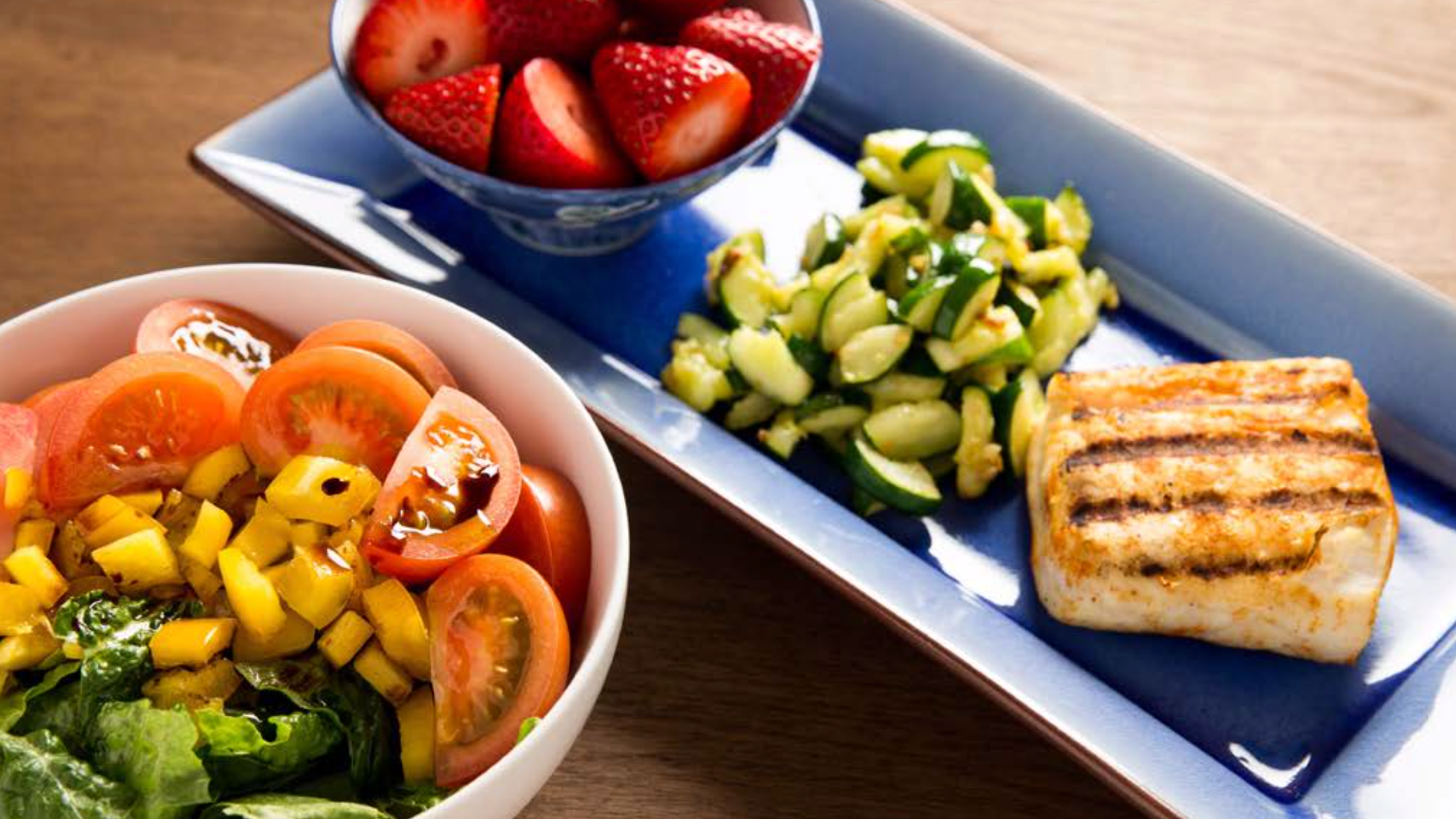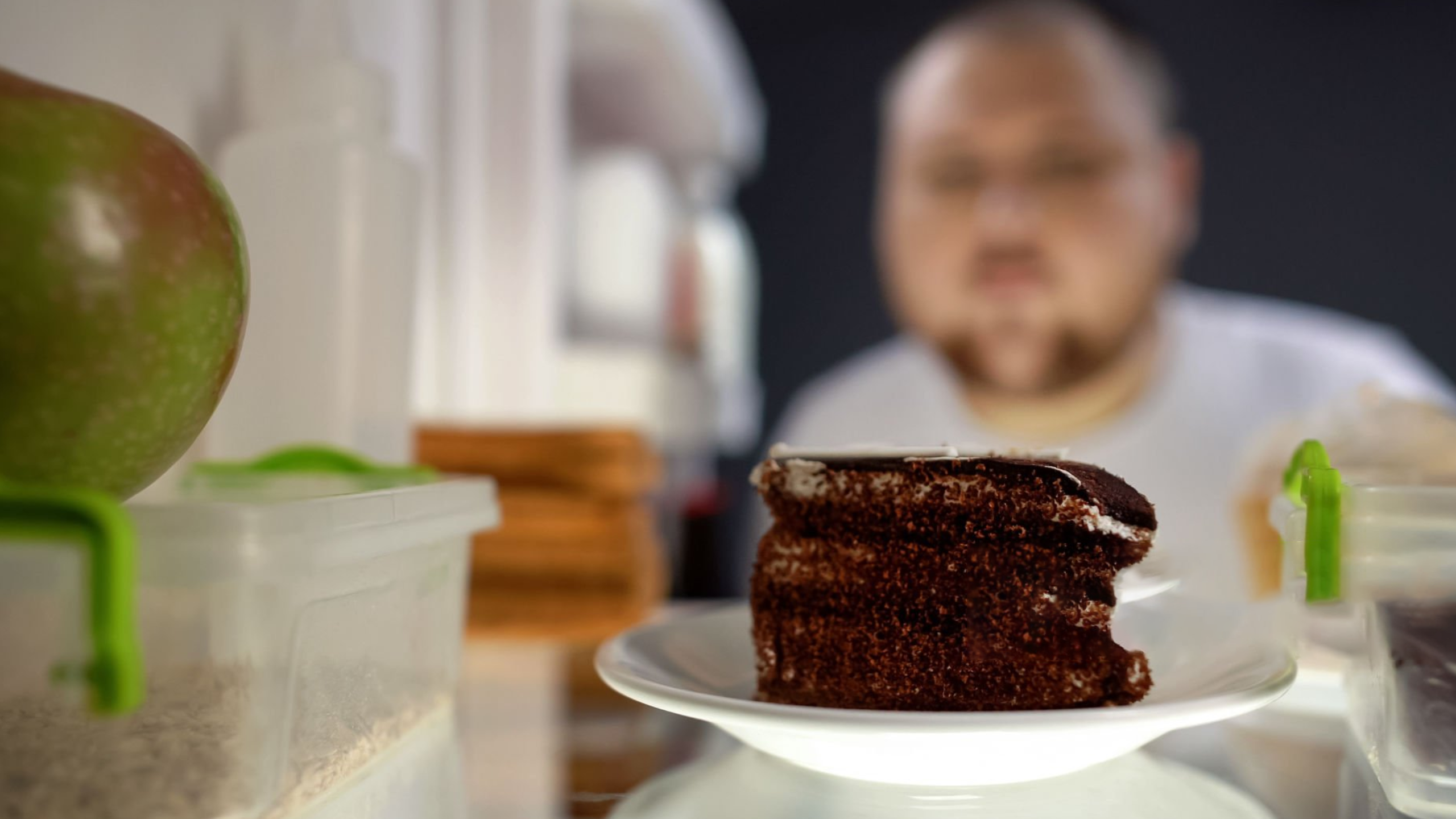By Greg Glassman
This article, by BSI’s co-founder, was originally published in The CrossFit Journal. While Greg Glassman no longer owns CrossFit Inc., his writings and ideas revolutionized the world of fitness, and are reproduced here.
Coach Glassman named his training methodology ‘CrossFit,’ which became a trademarked term owned by CrossFit Inc. In order to preserve his writings in their original form, references to ‘CrossFit’ remain in this article.
Note:
The bulk of this article consists of a series of printable charts, meant for use as a hardcopy while preparing your meals. We therefore recommend you print the full PDF. Originally released in 2004, this article was revamped in 2015 due to it’s overwhelming popularity.
Download 2004 PDF
Download 2015 PDF
Our recommendation to “eat meat and vegetables, nuts and seeds, some fruit, little starch, and no sugar” is adequate to the task of preventing the scourges of diet-induced disease, but more accurate and precise prescription is necessary to optimize physical performance.
Finely tuned, a good diet will increase energy, sense of well being and acumen, while simultaneously flensing fat and packing on muscle. When properly composed the right diet can nudge every important quantifiable marker for health in the right direction.
Diet is critical to optimizing human function and our clinical experience leads us to believe that Barry Sears’ “Zone Diet” closely models optimal nutrition.
CrossFit’s best performers are Zone eaters. When our second tier athletes commit to “strict” adherence to the Zone parameters they generally become top tier performers quickly. It seems that the Zone diet accelerates and amplifies the effects of the CrossFit regimen.
Unfortunately, the full benefit of the Zone diet is largely limited to those who have at least at first weighed and measured their food.
For a decade we’ve experimented with sizing and portioning strategies that avoid scales, and measuring cups and spoons only to conclude that natural variances in caloric intake and macronutrient composition without measurement are greater than the resolution required to turn good performance to great. Life would be much easier for us were this not so!
The “meal plans” and “block chart” below have been our most expedient approach for eliciting the Zone’s best offering in athletes.
Void of theoretical or technical content this portal to sound nutrition still requires some basic arithmetic and weighing and measuring portions for the first week.
Too many athletes after supposedly reading “Enter the Zone” still ask, “So what do I eat for dinner?” They get meal plans and block charts. We can make the Zone more complicated or simpler but not more effective.
We encourage everyone to weigh and measure portions for one week because it is supremely worth the effort, not because it is fun. If you choose to “guestimate” portions, you’ll have the result of CrossFit’s top performers only if and when you are lucky.
Within a week of weighing and measuring you’ll have developed an uncanny ability to estimate the mass of common-food portions, but, more importantly, you’ll have formed a keen visual sense of your nutritional needs. This is a profound awareness.
What is a Block?
A block is a unit of measure used to simplify the process of making balanced meals.
7 grams of protein = 1 block of protein
9 grams of carbohydrate = 1 block of carbohydrate
1.5 grams of fat = 1 block of fat
(There is an assumption that there is about 1.5 grams of fat in each block of protein, so the total amount of fat needed per 1 block meal is 3 grams.)
When a meal is composed of equal blocks of protein, carbohydrate, and fat, it is 40 % carbohydrate, 30 % protein and 30% fat.
Pages 3 and 4 list common foods, their macronutrient category (protein, carbohydrate or fat), along with a conversion of measurements to blocks.
This “block chart” is a convenient tool for making balanced meals. Simply choose 1 item from the protein list, 1 item from the carbohydrate list, and 1 item from the fat list to compose a 1 block meal. Or choose 2 items from each column to compose a 2 block meal, etc.
Here is a sample 4 block meal:
4 oz. chicken breast
1 artichoke
1 cup of steamed vegetables w/ 24 crushed peanuts
1 sliced apple
This meals contains 28 grams of protein, 36 grams of carbohydrate, and 12 grams of fat. It is simpler, though, to think of it as 4 blocks of protein, 4 blocks of carbohydrate, and 4 blocks of fat.
In the Zone scheme all of humanity calculates to either “2”, “3”, “4”, or “5 Block” meals at breakfast, lunch, and dinner with either “1” or “2 block” snacks between lunch and dinner and again between dinner and bedtime. We’ve simplified the process for determining which of the four meal sizes and two snack sizes best suits your needs. We assume that you are CrossFitters, i.e., very active.
Being a “4 Blocker”, for instance, means that you eat three meals each day where each meal is comprised of 4 blocks of protein, 4 blocks of carbohydrate, and 4 blocks of fat. Whether you are a “smallish” medium sized guy or a “largish” medium sized guy would determine whether you’ll need snacks of one or two blocks twice a day.
The “meal plans” stand as examples of 2, 3, 4, or 5 block meals and the “block chart” gives quantities of common foods equivalent to 1 block of protein, carbohydrate, or fat.
Once you decide that you need, say, “4 block” meals, it is simple to use the block chart and select four times something from the protein list, four times something from the carbohydrate list, and four times something from the fat list every meal.
One-block snacks are chosen from the block chart at face value for a single snack of protein, carbohydrates, and fat, whereas two block snacks are, naturally, chosen comprised of twice something from carbohydrates combined with twice something from the protein list, and twice something from the fats.
Every meal, every
equivalent blocks of protein, carbohydrate, and fat.
If the protein source is specifically labeled “non-fat”, then double the usual fat blocks for that meal. Read “Enter the Zone” to learn why.
At Zone parameters body fat comes off fast. When our men fall below 10% towards 5% we kick up the fat intake. The majority of our best athletes end up at X blocks of protein, X blocks of carbohydrate, and 4X or 5X blocks of fat. Learn to modulate fat intake to a level of leanness that optimizes performance.
The Zone diet neither prohibits nor requires any particular food. It can accommodate paleo or vegan, organic or kosher, fast food or fine dining, while delivering the benefits of high performance nutrition.
- Download Original PDF
- Download Español (Spanish) PDF
- Download Português (Portuguese) PDF
- Download Italiano (Italian) PDF
- Download Français (French) PDF
Greg Glassman founded CrossFit, a fitness revolution. Under Glassman’s leadership there were around 4 million CrossFitters, 300,000 CrossFit coaches and 15,000 physical locations, known as affiliates, where his prescribed methodology: constantly varied functional movements executed at high intensity, were practiced daily. CrossFit became known as the solution to the world’s greatest problem, chronic illness.
In 2002, he became the first person in exercise physiology to apply a scientific definition to the word fitness. As the son of an aerospace engineer, Glassman learned the principles of science at a young age. Through observations, experimentation, testing, and retesting, Glassman created a program that brought unprecedented results to his clients. He shared his methodology with the world through The CrossFit Journal and in-person seminars. Harvard Business School proclaimed that CrossFit was the world’s fastest growing business.
The business, which challenged conventional business models and financially upset the health and wellness industry, brought plenty of negative attention to Glassman and CrossFit. The company’s low carbohydrate nutrition prescription threatened the sugar industry and led to a series of lawsuits after a peer-reviewed journal falsified data claiming Glassman’s methodology caused injuries. A federal judge called it the biggest case of scientific misconduct and fraud she’d seen in all her years on the bench. After this experience Glassman developed a deep interest in the corruption of modern science for private interests. He launched CrossFit Health which mobilized 20,000 doctors who knew from their experiences with CrossFit that Glassman’s methodology prevented and cured chronic diseases. Glassman networked the doctors, exposed them to researchers in a variety of fields and encouraged them to work together and further support efforts to expose the problems in medicine and work together on preventative measures.
In 2020, Greg sold CrossFit and focused his attention on the broader issues in modern science. He’d learned from his experience in fitness that areas of study without definitions, without ways of measuring and replicating results are ripe for corruption and manipulation.
The Broken Science Initiative, aims to expose and equip anyone interested with the tools to protect themself from the ills of modern medicine and broken science at-large.
Support the Broken Science Initiative.
Subscribe today →
recent posts
Metabolic Flexibility to Burn Fat, Get Stronger, and Get Healthier
Expanding Horizons: Physical and Mental Rehabilitation for Juveniles in Ohio



